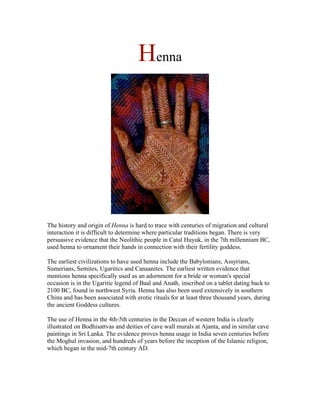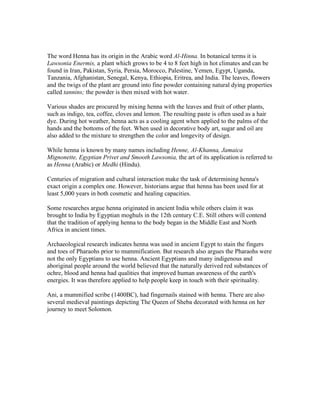Henna has a long history of over 5,000 years of use for both cosmetic and healing purposes. It originated in ancient India and the Middle East, where it was used extensively in cultural and religious traditions like weddings. Today, henna art is still practiced in North Africa, the Middle East, South Asia, and other regions with traditional cultural uses, as well as more personalized uses in Western cultures. Henna involves applying a paste made from henna plant leaves to temporarily stain the skin typically in decorative patterns.






